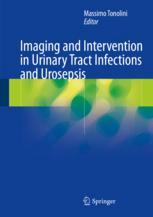

Most ebook files are in PDF format, so you can easily read them using various software such as Foxit Reader or directly on the Google Chrome browser.
Some ebook files are released by publishers in other formats such as .awz, .mobi, .epub, .fb2, etc. You may need to install specific software to read these formats on mobile/PC, such as Calibre.
Please read the tutorial at this link: https://ebookbell.com/faq
We offer FREE conversion to the popular formats you request; however, this may take some time. Therefore, right after payment, please email us, and we will try to provide the service as quickly as possible.
For some exceptional file formats or broken links (if any), please refrain from opening any disputes. Instead, email us first, and we will try to assist within a maximum of 6 hours.
EbookBell Team

5.0
88 reviewsAimed at practicing clinicians and radiologists, this volume provides up-to-date, detailed information on potentially severe urinary tract infections (UTIs), which frequently require intensive in-patient antibiotic therapy, percutaneous or surgical treatment. UTIs are the most prevalent infectious illness, and account for hundreds of thousands of emergency and hospital admissions yearly. Furthermore, UTIs are the most common (almost 40%) type of hospital-acquired infections, with bladder catheterisation being the key risk factor. According to the European Association of Urology guidelines, complicated urinary tract infections (C-UTIs) are those associated with structural or functional genitourinary abnormalities or with conditions that impair the host’s defence mechanisms, leading to an increased risk of acquiring infection or therapy failure.
Besides offering current perspectives from urologists, nephrologists, and specialists in infectious diseases, the book presents the techniques and highlights the role of ultrasound and contrast-enhanced ultrasound, nuclear medicine, multidetector computed tomography (CT) and magnetic resonance imaging (MRI) in providing comprehensive investigations of upper and lower tract UTIs, and of systemic infections from unknown sources. Cross-sectional imaging is currently recommended to confirm UTI, to assess severity and look for underlying treatable structural or functional abnormalities, in order to provide a consistent basis for a correct therapeutic choice.
Furthermore, dedicated chapters illustrate the current status of UTI imaging in children and the expanding role and possibilities of interventional radiology in the treatment of severe urinary tract infections.